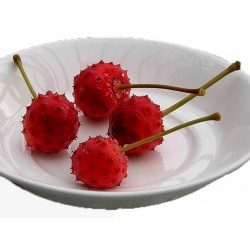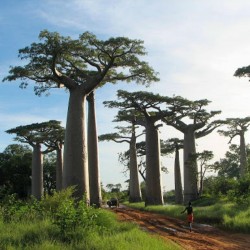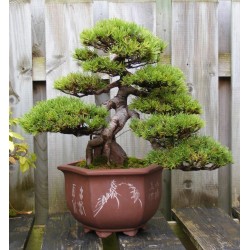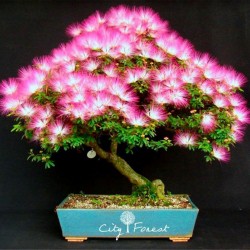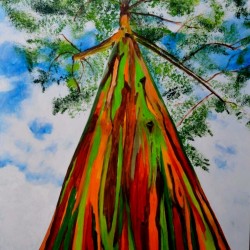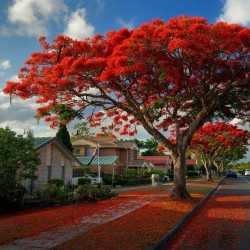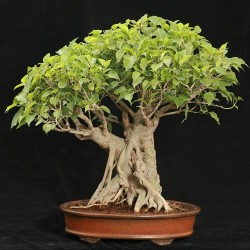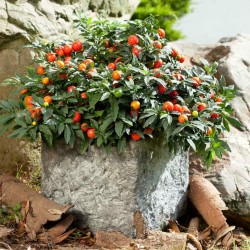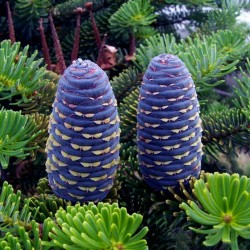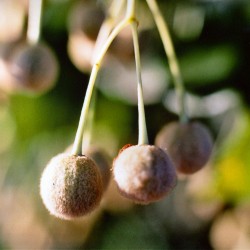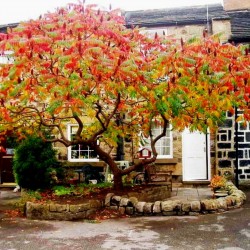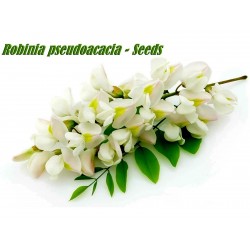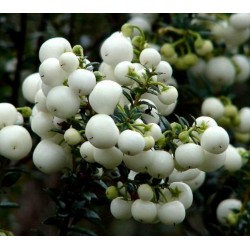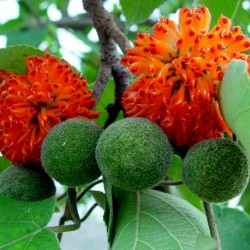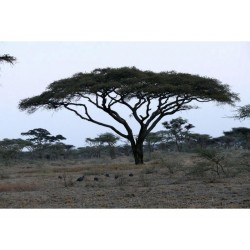Seeds Gallery EU,
5/
5
<meta http-equiv="Content-Type" content="text/html; charset=UTF-8" />
<h2><strong>Baobab Seeds (Adonsonia digitata)</strong></h2>
<h2><span style="color: #ff0000;"><strong>Price for Package of 5, 10, 20 seeds.</strong></span></h2>
<p><i><b>Adansonia digitata</b></i>, the<span> </span><b>baobab</b>, is the most widespread tree species of the genus<span> </span><i>Adansonia</i>, the baobabs, and is native to the African continent. The long-lived<span> </span>pachycauls<span> </span>are typically found in dry, hot<span> </span>savannahs<span> </span>of<span> </span>sub-Saharan Africa, where they dominate the landscape and reveal the presence of a watercourse from afar.<sup id="cite_ref-wick_2-0" class="reference">[2]</sup><span> </span>Their growth rate is determined by groundwater or rainfall,<sup id="cite_ref-hank_3-0" class="reference">[3]</sup><sup id="cite_ref-red_4-0" class="reference">[4]</sup><span> </span>and their maximum age, which is subject to much conjecture, seems to be in the order of 1,500 years.<sup id="cite_ref-wood_5-0" class="reference">[5]</sup><span> </span>They have traditionally been valued as sources of food, water, health remedies or places of shelter and are steeped in legend and superstition.<sup id="cite_ref-hank_3-1" class="reference">[3]</sup><span> </span>European explorers of old were inclined to carve their names on baobabs, and many are defaced by modern graffiti.<sup id="cite_ref-wick_2-1" class="reference">[2]</sup></p>
<p>Common names for the baobab include<span> </span><b>dead-rat tree</b><span> </span>(from the appearance of the fruit<sup class="noprint Inline-Template Template-Fact">[<i><span title="The fruit looks nothing like dead rats, covertly negative potential, needs historical reference, otherwise please post in the urban dictionary (March 2019)">citation needed</span></i>]</sup>),<span> </span><b>monkey-bread tree</b><span> </span>(the soft, dry fruit is edible),<span> </span><b>upside-down tree</b><span> </span>(the sparse branches resemble roots) and<span> </span><b>cream of tartar tree</b><span> </span>(cream of tartar).</p>
<p><span>The vernacular name "baobab" is derived from </span>Arabic<span> بو حِباب (būħibāb), which means "father of many seeds". The scientific name </span><i>Adansonia</i><span> refers to the French explorer and </span>botanist<span>, </span>Michel Adanson<span> (1727–1806), who observed a specimen in 1749 on the island of </span>Sor<span>, </span>Senegal<span>.</span><sup id="cite_ref-6" class="reference">[6]</sup><span> On the nearby </span>Îles des Madeleines<span> Adanson found another baobab, 3.8 m in diameter, which bore the carvings of passing mariners on its trunk, including those of </span>Henry the Navigator<span> in 1444 and </span>André Thevet<span> in 1555.</span><sup id="cite_ref-wick_2-2" class="reference">[2]</sup><span> When </span>Théodore Monod<span>searched the island in the 20th century, the tree was not to be found however. Adanson concluded that the baobab, of all the trees he studied, “is probably the most useful tree in all.” He consumed baobab juice twice a day, while in Africa. He remained convinced that it maintained his health for him.</span><sup id="cite_ref-powbab.com_7-0" class="reference">[7]</sup><span> "Digitata" refers to the digits of the hand. The baobab's compound leaves with normally five (but up to seven) leaflets are akin to a hand.</span></p>
<p>The trees usually grow as solitary individuals, and are large and distinctive elements of<span> </span>savannah<span> </span>or<span> </span>scrubland<span> </span>vegetation. Some large individuals live to well over a thousand years of age.<sup id="cite_ref-9" class="reference">[9]</sup><span> </span>All baobab trees are<span> </span>deciduous, losing their leaves in the dry season, and remain leafless for nine months of the year.</p>
<p>They can grow to between 5–25 m (16–82 ft) in height. They are in fact known both for their height and trunk's girth. The trunk tends to be bottle-shaped and can reach a diameter of 10–14 m (33–46 ft).<sup id="cite_ref-eol.org_10-0" class="reference">[10]</sup><span> </span>The span of the roots actually exceed the tree's height, a factor that enables it to survive in a dry climate. Many consider the tree to be “upside-down” due to the trunk likeness to a<span> </span>taproot<span> </span>and the branches akin to finer<span> </span>capillary<span> </span>roots. The trunk is smooth and shiny<sup id="cite_ref-krugerpark.co.za_11-0" class="reference">[11]</sup><span> </span>and can range from being reddish brown to grey. The bark can feel cork-like.<sup id="cite_ref-powbab.com_7-1" class="reference">[7]</sup><span> </span>The branches are thick and wide and very stout compared to the trunk.</p>
<p>During the early summer (October to December in southern hemisphere)<sup id="cite_ref-shee_12-0" class="reference">[12]</sup><span> </span>the tree bears very large, heavy, white flowers. These are 12 cm (4.7 in) across and open during the late afternoon to stay open for one night.<sup id="cite_ref-hank_3-2" class="reference">[3]</sup><sup id="cite_ref-eol.org_10-1" class="reference">[10]</sup><span> </span>The pendulous, showy flowers have a very large number of stamens. They have a sweet scent but later emit a<span> </span>carrion<span> </span>smell, especially when they turn brown and fall after 24 hours.<sup id="cite_ref-hank_3-3" class="reference">[3]</sup><sup id="cite_ref-eol.org_10-2" class="reference">[10]</sup><span> </span>Researchers have shown that they appear to be primarily pollinated by<span> </span>fruit bats<span> </span>of the subfamily<span> </span>Pteropodinae. The flowers have 5 petals that are leathery and hairy on the inside. The<span> </span>sepals<span> </span>are cup-shaped and 5-cleft. The<span> </span>stamens<span> </span>are divided into multiple<span> </span>anthers<span> </span>and<span> </span>styles<span> </span>are 7-10 rayed.</p>
<p>The<span> </span>indehiscent<span> </span>fruit is large, egg-shaped capsules.<span> </span>They are filled with pulp that dries, hardens, and falls to pieces that look like chunks of powdery, dry bread.<span> </span>The seed is hard, black and kidney-shaped.</p>
<h2><span class="mw-headline" id="Range">Range</span></h2>
<p>The northern limit of its distribution in Africa is associated with rainfall patterns; only on the<span> </span>Atlantic<span> </span>coast and in the<span> </span>Sudan<span> </span>does its occurrence venture naturally into the<span> </span>Sahel. On the Atlantic coast, this may be due to spreading after cultivation. Its occurrence is very limited in<span> </span>Central Africa, and it is found only in the very north of<span> </span>South Africa. In<span> </span>Eastern Africa, the trees grow also in<span> </span>shrublands<span> </span>and on the coast. In<span> </span>Angola<span> </span>and<span> </span>Namibia, the baobabs grow in woodlands, and in coastal regions, in addition to savannahs. It is also found in<span> </span>Dhofar<span> </span>region of<span> </span>Oman<span> </span>and<span> </span>Yemen<span> </span>in the<span> </span>Arabian Peninsula,<span> </span>Western Asia. This tree is also found in India, particularly in the dry regions of the country,<sup id="cite_ref-14" class="reference">[14]</sup><span> </span>and in<span> </span>Penang, Malaysia, along certain streets.<sup id="cite_ref-15" class="reference">[15]</sup></p>
<p>The baobab is native to most of Africa, especially in drier, less tropical climates. It is not found in areas where sand is deep. It is sensitive to water logging and frost.<sup id="cite_ref-16" class="reference">[16]</sup><span> </span>More specifically:<span> </span>Mauritania,<span> </span>Senegal,<span> </span>Guinea,<span> </span>Sierra Leone,<span> </span>Mali,<span> </span>Burkina Faso,<span> </span>Ghana,<span> </span>Togo,<span> </span>Benin,<span> </span>Niger,<span> </span>Nigeria, n-Cameroon,<span> </span>Chad,<span> </span>Sudan,<span> </span>Congo,<span> </span>DR Congo<span> </span>(Zaire),<span> </span>Eritrea,<span> </span>Ethiopia, s-Somalia,<span> </span>Kenya,<span> </span>Tanzania,<span> </span>Zambia,<span> </span>Zimbabwe,<span> </span>Malawi,<span> </span>Mozambique,<span> </span>Angola,<span> </span>São Tomé,<span> </span>Príncipe<span> </span>isl.,<span> </span>Annobon<span> </span>isl.,<span> </span>Java<span> </span>(introduced),<span> </span>Nepal<span> </span>(introduced),<span> </span>Sri Lanka(introduced),<span> </span>Philippines<span> </span>(introduced),<span> </span>Jamaica<span> </span>(introduced),<span> </span>South Africa<span> </span>(Transvaal),<span> </span>Namibia,<span> </span>Botswana,<span> </span>Puerto Rico<span> </span>(introduced),<span> </span>Haiti<span> </span>(introduced),<span> </span>Dominican Republic(introduced),<span> </span>Venezuela<span> </span>(introduced),<span> </span>Seychelles<span> </span>(introduced),<span> </span>Madagascar<span> </span>(introduced),<span> </span>Comores<span> </span>(introduced),<span> </span>India<span> </span>(introduced), sw-Yemen,<span> </span>Oman<span> </span>(Dhofar),<span> </span>China<span> </span>(introduced),<span> </span>Guangdong<span> </span>(introduced),<span> </span>Fujian<span> </span>(introduced),<span> </span>Yunnan<span> </span>(introduced).</p>
<h2><span class="mw-headline" id="Longevity">Longevity</span></h2>
<p><i>Adansonia</i><span> </span>trees produce faint<span> </span>growth rings, probably annually, but they are not reliable for aging specimens, because they are difficult to count and may fade away as the wood ages.<span> </span>Radiocarbon dating<span> </span>has provided data on a few individuals of<span> </span><i>A. digitata</i>. The Panke baobab in<span> </span>Zimbabwe<span> </span>was some 2,450 years old when it died in 2011, making it the oldest<span> </span>angiosperm<span> </span>ever documented, and two other trees — Dorslandboom in<span> </span>Namibia<span> </span>and Glencoe in South Africa — were estimated to be approximately 2,000 years old.<sup id="cite_ref-18" class="reference">[18]</sup><span> </span>Another specimen known as Grootboom was dated after it died and found to be at least 1275 years old.<sup id="cite_ref-patrut_19-0" class="reference">[19]</sup><sup id="cite_ref-kew_20-0" class="reference">[20]</sup><span> </span>Greenhouse gases,<span> </span>climate change, and<span> </span>global warming<span> </span>appear to be factors reducing baobab longevity.</p>
<h2><span class="mw-headline" id="Food">Food</span></h2>
<div class="thumb tright">
<div class="thumbinner"><img alt="" src="https://upload.wikimedia.org/wikipedia/commons/thumb/f/f4/Baobabcowherd.jpg/250px-Baobabcowherd.jpg" width="250" height="167" class="thumbimage" />
<div class="thumbcaption">
<div class="magnify"></div>
A cowherd in<span> </span>Senegal<span> </span>harvests baobab leaves for forage in the dry season</div>
</div>
</div>
<p>The baobab is a<span> </span>traditional food<span> </span>plant in Africa, but is little-known elsewhere. The fruit has been suggested to have the potential to improve nutrition, boost food security, foster rural development, and support sustainable land care.<sup id="cite_ref-22" class="reference">[22]</sup></p>
<h3><span class="mw-headline" id="Fruit">Fruit</span></h3>
<p>The African baobab fruit is usually 15–20 cm (6–8 in) long, but can be as big as 25 centimetres (9.8 in). The dry pulp is either eaten fresh or dissolved in milk or water to make a drink. In<span> </span>Sudan<span> </span>— where the tree is called<span> </span><i>tebeldi</i><span> </span>— people make<span> </span><i>tabaldi</i><span> </span>juice by soaking and dissolving the dry pulp of the fruit in water, locally known as<span> </span><i>gunguleiz</i>.</p>
<h3><span class="mw-headline" id="Leaves_and_seed">Leaves and seed</span></h3>
<p>Baobab leaves can be eaten as a<span> </span>relish. Young fresh leaves are cooked in a sauce and sometimes are dried and powdered. The powder is called<span> </span><i>lalo</i><span> </span>in<span> </span>Mali<span> </span>and sold in many village markets in<span> </span>Western Africa. The leaves are used in the preparation of a soup termed miyan kuka in Northern Nigeria and are rich in phytochemicals and minerals.<sup id="cite_ref-25" class="reference">[25]</sup><span> </span>Oil extracted by pounding the seeds can be used for<span> </span>cooking<span> </span>but this is not widespread.</p>
<p>Baobab leaves are sometimes used as forage for ruminants in dry season. The oilmeal, which is a byproduct of oil extraction, can also be used as animal feed.<sup id="cite_ref-feedipedia_27-0" class="reference">[27]</sup><span> </span>In times of drought, elephants consume the juicy wood beneath the bark of the baobab.</p>
<h3><span class="mw-headline" id="For_export">For export</span></h3>
<p>In 2008, the<span> </span>European Union<span> </span>approved the use and consumption of baobab fruit. It is commonly used as an ingredient in<span> </span>smoothies<span> </span>and<span> </span>cereal bars.<sup id="cite_ref-28" class="reference">[28]</sup><span> </span>In 2009, the<span> </span>United States Food and Drug Administration<span> </span>(US FDA) granted<span> </span>generally recognized as safe<span> </span>(GRAS) status to baobab dried fruit pulp as a food ingredient.</p>
<h2><span class="mw-headline" id="Variation_and_dispersal">Variation and dispersal</span></h2>
<p>In Africa, the different populations of baobabs have revealed significant genetic differences. It has consequently been suggested that the taxon contains more than one species. The shape of their fruit especially, varies considerably from region to region.</p>
<p>Baobab seed withstand drying and remain viable over long periods, as it has a hard seed coat. It can potentially be dispersed over long distances, and its germination potential is improved when it has passed through the digestive tract of an animal. Animals like<span> </span>elephants,<span> </span>black rhinos<span> </span>and<span> </span>eland<span> </span>can potentially convey the seeds over long distances.<span> </span>Baboons<span> </span>likewise spread the seeds in their dung, but over shorter distances.</p>
<p>Pollination in the baobab is achieved primarily by<span> </span>fruit bats, but<span> </span>bush babies<span> </span>and several kinds of insect also assist. Some aspects of the baobab's reproductive biology are not yet understood. It is still speculated whether fertile baobab seeds can result from pollination by the tree's own pollen. It would appear as if pollen from another tree is required for fertile seed, as isolated trees do form seed, only to abort them at a late stage. The existence of some very isolated trees, may then be due to their<span> </span>self-incompatibility<span> </span>and inability to reproduce.</p>
<p>Arab traders introduced it to northwestern<span> </span>Madagascar. There they were often planted at the center of villages, and sometimes outlived them.</p>
<h2><span class="mw-headline" id="Legends_and_myths">Legends and myths</span></h2>
<div class="thumb tright">
<div class="thumbinner"><img alt="" src="https://upload.wikimedia.org/wikipedia/commons/thumb/3/39/The_baobab%2C_Mahajanga.jpg/250px-The_baobab%2C_Mahajanga.jpg" width="250" height="141" class="thumbimage" />
<div class="thumbcaption">
<div class="magnify"></div>
The baobab in<span> </span>Mahajanga, Madagascar, had a circumference of 21 metres by 2013. It became the symbol of the city, and was formerly a place for executions and important meetings. According to<span> </span>animistbelief the ancestors are pleased and bless your travels if you circle it seven times.</div>
</div>
</div>
<p>Along the<span> </span>Zambezi, the tribes believe that baobabs were upright and too proud. The gods became angry and uprooted them and threw them back into the ground upside-down. Evil spirits now cause bad luck to anyone that picks up the sweet white flowers. More specifically, a lion will kill them.</p>
<p>In contrast, some people<span> </span>think that if one drinks from water in which baobab seeds have soaked, you will be safe from crocodile attacks.</p>
<p>In<span> </span>Zambia, one baobab is said to be haunted by a ghostly<span> </span>python. A long time ago, the python lived in the hollow trunk and was worshipped by the natives. A white hunter shot him down, and led to bad consequences. Some nights, the natives still hear the hissing of the snake.</p>
<p>In<span> </span>Kafue National Park, one of the largest baobabs is known as “Kondanamwali” or the “tree that eats maidens.” The tree fell in love with four beautiful maidens. When they reached puberty, they made the tree jealous by finding husbands. So, one night, during a thunderstorm, the tree opened its trunk and took the maidens inside. A rest house has been built in the branches of the tree. On stormy nights, the crying of the imprisoned maidens can still be heard.</p>
<p>Along the<span> </span>Limpopo River, it is thought that when a young boy is bathed in the water used to soak baobab bark, he will grow up into a big man.</p>
<p>Some people believe that women living in<span> </span>kraals<span> </span>where baobabs are plenty will have more children. This is scientifically plausible as those women will have better access to the tree's vitamin-rich leaves and fruits to complement a vitamin-deficient diet.</p>
<p>The African bushman legend states that Thora, the god, took a dislike to the baobab growing in his garden. Therefore, he threw it over the wall of Paradise onto the Earth below. The tree landed upside down and continued to grow.</p>
<p>In the video game Archeage, baobab fruits sell for 9 silver each, making them a valuable resource to farm and gather, especially in their favorite arid climate.</p>
<p>The tree also plays a role in<span> </span>Antoine De Saint-Exupéry’s fictional children’s book,<span> </span>The Little Prince. In the story, baobabs are described as dangerous plants that must be weeded out from the good plants, less they overcome a small planet and even break it to pieces.</p>
<h2><span class="mw-headline" id="Conservation_status_and_threats">Conservation status and threats</span></h2>
<p>As of April 2015 baobabs are not yet classified by the<span> </span>IUCN's Red List criteria, but they are a part of the “Catalogue of Life.”<sup id="cite_ref-catalogueoflife.org_17-1" class="reference">[17]</sup><span> </span>The baobab is a protected tree in<span> </span>South Africa.<sup id="cite_ref-dwaf_33-0" class="reference">[33]</sup><span> </span>In the<span> </span>Sahel, the effects of drought,<span> </span>desertification<span> </span>and over-use of the fruit have been cited as causes for concern.<sup id="cite_ref-osman_34-0" class="reference">[34]</sup></p>
<h2><span class="mw-headline" id="Prominent_specimens">Prominent specimens</span></h2>
<p>A number of individual baobab trees attract sightseers due to either their age, size, specific history or isolated occurrence.</p>
<p>Around<span> </span>Gweta, Botswana, some have been declared national monuments. Green's Baobab, 27 km south of Gweta was inscribed by the 19th-century hunters and traders<span> </span>Frederick Thomas Green<span> </span>and Hendrik Matthys van Zyl besides other ruthless characters. About 11 km south of Green's Baobab is the turn-off to the multi-stemmed Chapman's Baobab, also known as Seven Sisters, or Xaugam.<sup id="cite_ref-35" class="reference">[note 1]</sup><span> </span>It was named for<span> </span>Chapman, but is also taken to be a camping site of<span> </span>Livingstone<span> </span>and<span> </span>Selous. It had a circumference of 25 m before its constituent trunks collapsed outward in 2016. It is not confirmed dead, however.<sup id="cite_ref-afrgeo_36-0" class="reference">[35]</sup><span> </span>The tree was historically used as a navigation beacon and as a post office by passing explorers, traders and travellers, many of whom left inscriptions on its trunk.</p>
<p>Baines' Baobabs grow on a tiny islet in Kudiakam Pan, Botswana. The seven trees are named for<span> </span>Thomas Baines<span> </span>who painted them in May 1862. The fallen giant of Baines' day is still sprouting leaves (as of 2004), and a younger generation of trees are in evidence. The islet is accessible in winter when the pan is dry.<sup id="cite_ref-wats_37-0" class="reference">[36]</sup></p>
<p>The Ombalantu baobab in Namibia has a hollow trunk that can accommodate some 35 people. At times it has served as a chapel, post office, house, and a hiding site. Some large specimens have been transplanted to new sites, as was the one at Cresta Mowana lodge in<span> </span>Kasane.<sup id="cite_ref-ash_38-0" class="reference">[37]</sup></p>
<p>At Saakpuli (also Sakpele) in northern<span> </span>Ghana<span> </span>the site of a 19th-century slave transit camp is marked by a stand of large baobabs, to which slaves were chained.<sup id="cite_ref-bri_39-0" class="reference">[38]</sup><span> </span>The chains were wrapped around their trunks or around the roots. Similarly, two trees at<span> </span>Salaga<span> </span>in central Ghana are reminders of the slave trade. One, located at the former slave market at the center of town, was replanted at the site of the original to which slaves were shackled. A second larger tree marks the slave cemetery, where bodies of dead slaves were dumped.</p>
<p>Inside the<span> </span>Golkonda<span> </span>fort in<span> </span>Hyderabad, India is a baobab tree estimated to be 430 years old and the largest baobab outside of Africa.</p>
<h2><strong>How to Sprout Baobab Seeds</strong></h2>
<p>Germinating Baobab Seeds Breaking Dormancy: Baobab seeds are dormant in the soil sometimes for years until they germinate. So we use some techniques to increase the germination rate. Soak the seeds in almost boiling water (80 - 90 ° C) for 6 minutes, so the germination rate increases by up to 80%. Sand a small area of the seeds until the first layer begins to lighten, then soak the seeds for 48 hours, changing the water after the first 24 hours. Sowing: You can sow in pots, seedling bags, sowing or flower beds. It is important to remember that it is necessary to sow between 8 and 10cm, the seedlings of Baobá have very demanding root and grow vigorously it needs space, so choose immediately what you want to do with the specimen; if you are going to make a bonsai, for example, plant in shallow pots and in the third month do the first pruning of roots. If you want a beautiful tree, choose a place with plenty of space and not on rocks to prevent it from falling in the future.</p>
<h2><strong>Cultivation:</strong></h2>
<p>Baobab does not require much in terms of soil. In this case the more drained the better. The excess of organic matter in the soil can cause the accumulation of water that can cause the roots to decay and the fungi propagation. It tolerates stony or sandy soils.</p>
T 6 (5 S)

